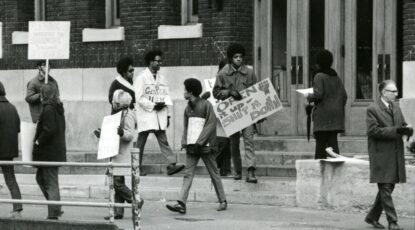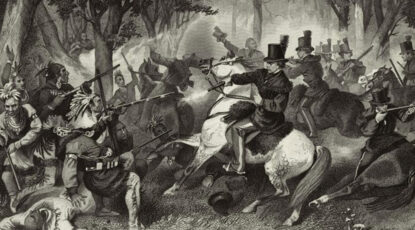Heritage/Tradition
-
When everyone registered in Waterman Gym
Long before online scheduling, U-M students gathered en masse to register for courses, often spending hours in line at Waterman Gym. The lucky ones might get their first choice and find a future spouse in the crowd. The less fortunate walked away dateless clutching a schedule filled with 8 o’clock classes.
-
Michigan’s affirmative action debate
To settle the Black Action Movement strike in 1970, the University promised enough financial aid to raise Black enrollment to 10 percent. The aid promise was kept. But Black enrollment rose only by small increments through the 1980s. So Black students and their supporters insisted that U-M do more. (Part 2 of a 2-part series.)
-
‘On a scale of 1 to 5, are you….’
How do people feel about the president? The new laundry detergent? The state of the world? Prior to the Likert Scale and the founding of U-M’s Institute for Social Research, it was difficult to say. ISR’s legacy lives in every massive sample survey since Truman beat Dewey in 1948.
-
Thirteen days in 1970: The BAM strike
In February 1970, U-M students operating as the Black Action Movement called a strike on classes. They interrupted lectures, banged garbage-can lids in classroom buildings, and hassled fellow students attending class. Their demand to President Robben Fleming: Increase Black enrollment from 3.4 percent to 10 percent.
-
Governor Cass and the Indians
All good origin stories contain at least a kernel of myth at the center of the plot. If there’s any such myth in the University’s origins, it’s not about heroes or grandiose works. It’s an idea embedded in the Northwest Ordinance of 1787 — that these Great Lakes states should provide public education to the region’s children.
-
The ‘super-university’ moves north
When U-M regents broke ground on North Campus in 1952, they were responding to more than a postwar growth spurt in admissions. They were signaling the University’s full embrace of research applied to the demands of an urban, industrial society.
-
Christmas, Crosby, and ‘the Code’
Michigan’s William Clements Library — one of the world’s leading archives of U.S. history and Americana — holds a small but fascinating cache of papers of the singer and actor Bing Crosby, including several items linked to the holiday movie classic, ‘White Christmas.’
-
The unsinkable Sarah E. Ray
In 1945, Sarah Elizabeth Ray was denied passage on a ferry on the Detroit River because she was Black. She fought the injustice, became a civil rights activist, and her case went all the way to the U.S. Supreme Court. Now, her legacy is being preserved in a collection coming to the Bentley Historical Library.
-
When ‘Red Emma’ came to town
In the 1910s, anarchist, writer, and provocateur Emma Goldman, described by J. Edgar Hoover as ‘the most dangerous woman in America,’ paid regular visits to Ann Arbor. She described one rowdy U-M crowd as ‘pampered parasites, not one of them with enough backbone to fight a flea.’










